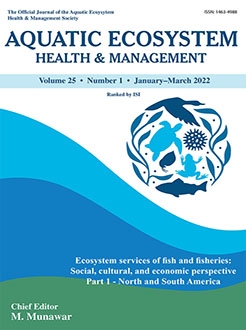Ecosystem services of fish and fisheries: Social, cultural, and economic perspective Part 1 - North and South America
FOREWORD (1)
PREFACE (1)
NORTH AMERICA (5)
SOUTH AMERICA (2)

No abstract available
No abstract available
No abstract available
